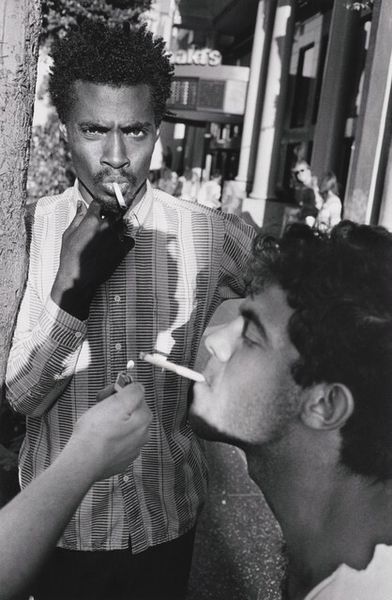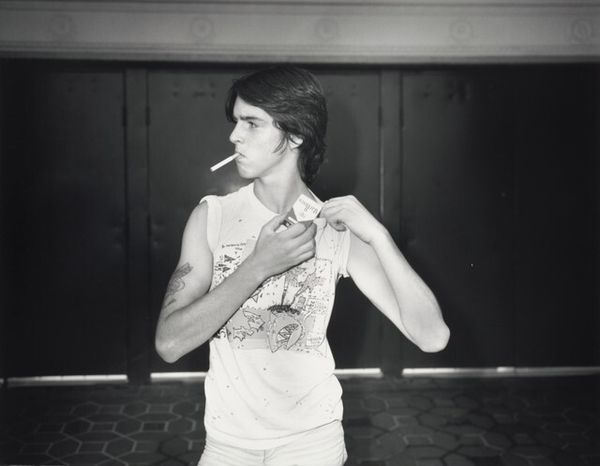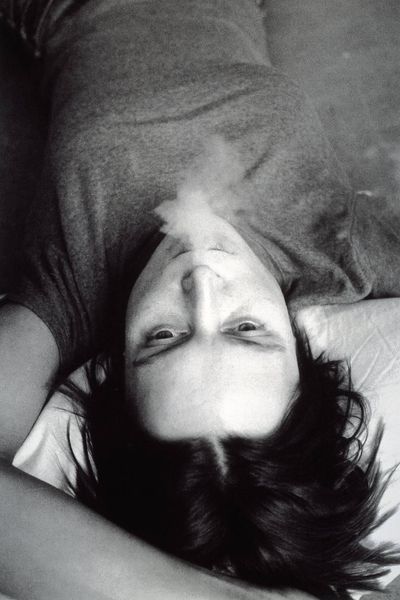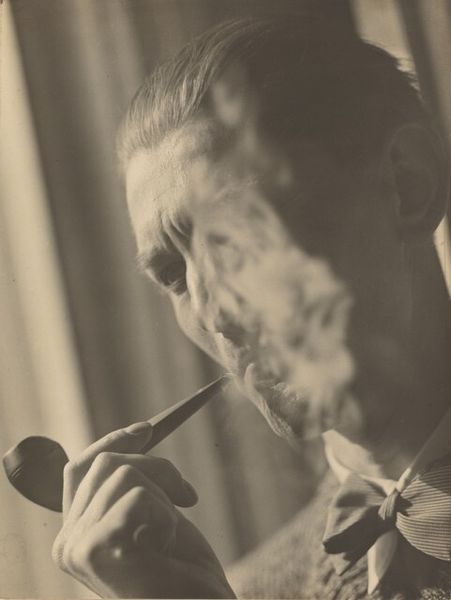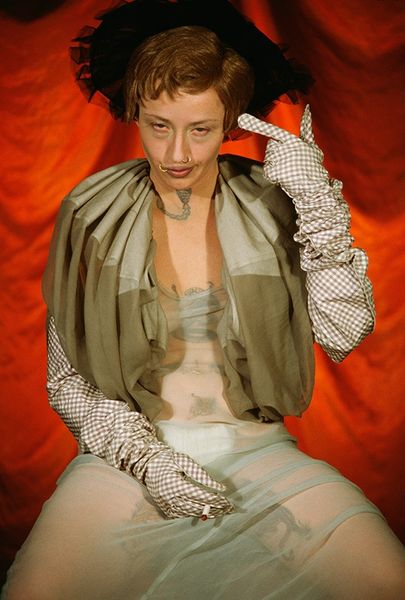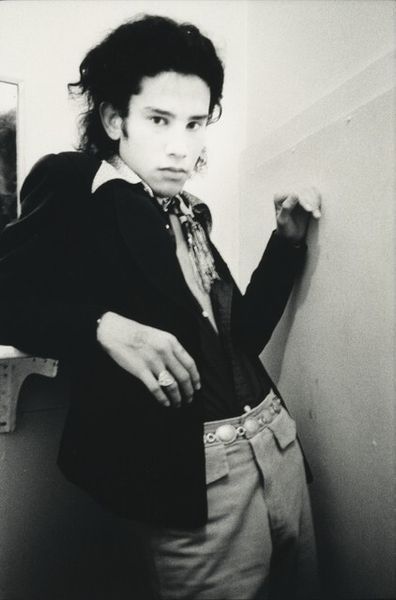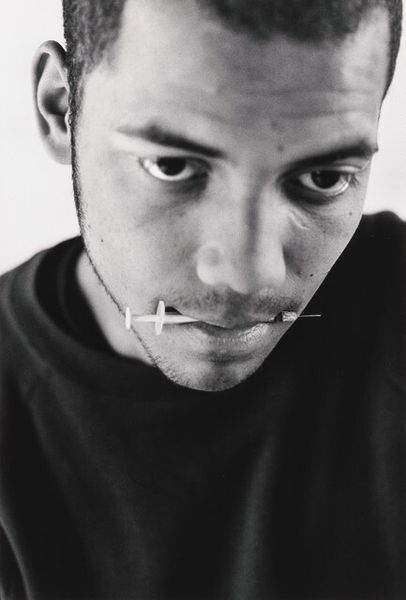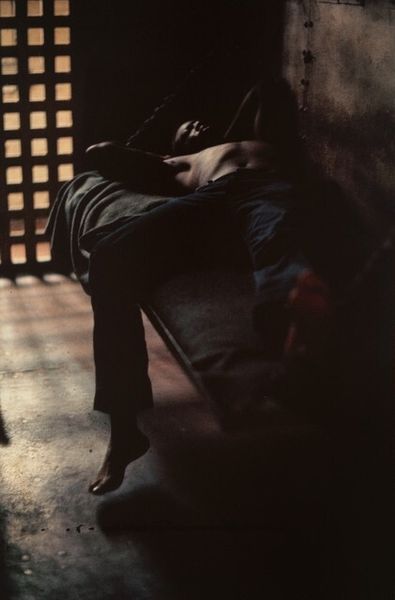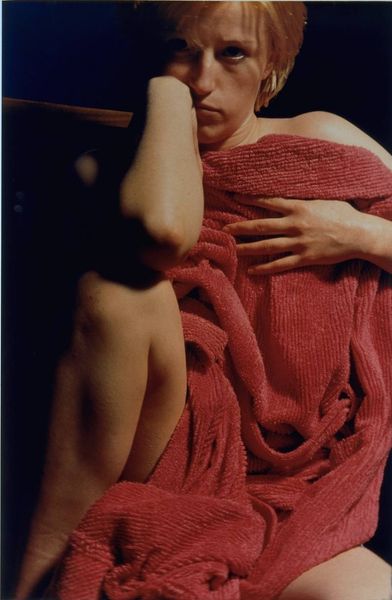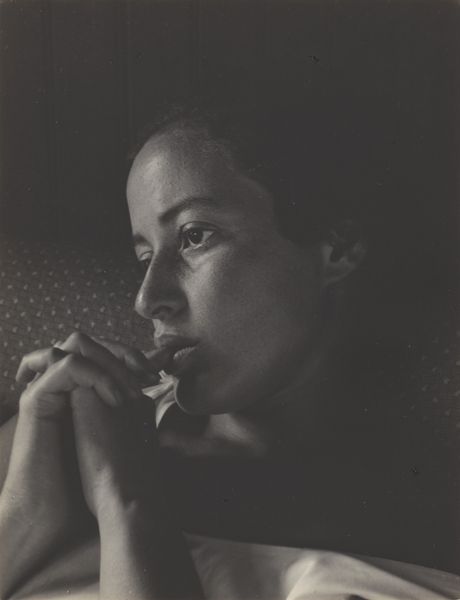
photography
#
portrait
#
character portrait
#
low key portrait
#
face
#
portrait image
#
portrait
#
close up portrait
#
portrait subject
#
figuration
#
photography
#
portrait reference
#
human
#
nose
#
genre-painting
#
portrait character photography
#
portrait photography
#
realism
#
celebrity portrait
Copyright: Miguel Rio Branco,Fair Use
Editor: This is a portrait by Miguel Rio Branco, titled *Solo, MALDICIDADE 4*. There’s no date listed, and it appears to be a photograph. It's quite striking – the subject is holding a cigar, and the lighting is so intense. What's your take on it? Curator: The intensity is what grabs me too. Rio Branco's work frequently explores themes of marginality and social commentary, and he’s deeply engaged with urban spaces and the lives of people within them. Looking at the cigar, the direct gaze, I wonder about the societal performance being captured. How much of this is presentation for the camera, and how much is documenting an existing narrative of the subject's life? Editor: That’s a good point. It feels very staged but also intimate. Could it be critiquing traditional portraiture? Curator: Precisely! Who gets to be portrayed, how they're portrayed, and the power dynamics inherent in the act of representation itself – all fair questions here. Rio Branco's visual language often incorporates a certain rawness; this could be him subverting expectations associated with conventional portraiture, particularly those depicting women. Does the cigar suggest agency, or does it play into stereotypical images? It's worth unpacking these conflicting readings. Editor: That’s fascinating. It makes you consider who this photograph is *for*, and what power it holds as an image. Curator: Absolutely. And it prompts us to think critically about the museum or gallery space displaying it. What narratives are we, as viewers and institutions, perpetuating by exhibiting such an image? Who benefits from it? Editor: Wow, I hadn't thought about it that way. There's so much more to this portrait than meets the eye. Curator: Indeed! It reminds us that art always exists within, and responds to, a broader social and political landscape. Analyzing that context unlocks richer understandings.
Comments
No comments
Be the first to comment and join the conversation on the ultimate creative platform.
